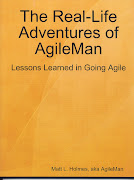I happen to be working with a student right now who's prepping to take his S.A.T.s (which I think once stood for Scholastic Aptitude Test) in order to gain acceptance to an American university. I've obviously heard of these before now, and Vicki would've written them back when she was in high school (in Michigan), but they're mostly a new concept to me. What I especially wasn't expecting was just how easy most of the Math questions seem to be!
Now, I'm doing "S.A.T. prep", via an online site, so who knows if the questions my student and I have been using are truly representative or not... but they're advertised as such. Because they're used for university and college admission, I had always figured they'd be somewhat similar to the Descartes or Gauss Math contests that I've seen in the past from University of Waterloo, for example. Those suckers are hard! And the theory behind them seems to be that anyone short of a genius will find them intimidating, and therefore you'll have a wide range of results across which to evaluate the candidates.
What I see in these S.A.T. questions, on the other hand, are rudimentary challenges like converting fractions between improper and mixed form, solving trivial algebraic equations and understanding how things like exponents and averages work. So far I haven't run into a question that took me more than about 30 seconds to figure out how I would solve it. Maybe the test itself is so time-constrained that I wouldn't really be able to get a perfect result, but short of that: it's not challenging at all.
One particular shortcoming of the test, in my opinion (again, basing it on these prep questions which may not be appropriate), is the large number of missed opportunities among the multiple choice answers. In other words, I see my student start to go down an obvious wrong path in solving a question, and yet the result he comes up with is not among the 5 choices he's presented with! I learned all about that particular trick while taking Physics at Waterloo, and since then I've always assumed that any reputable institution using multiple choice answers would employ it. Without it, exam-writers often realize their mistake simply because their answer doesn't show up among A, B, C, D or E. Naturally, you'd rather test their ability to either do it right the first time or recognize the wrongness of their result. Weird to not see that employed here.
Thursday, October 21, 2010
Subscribe to:
Post Comments (Atom)















No comments:
Post a Comment